
Discover the top 15 stock market traders who have made their mark in history with their exceptional trading strategies and immense wealth accumulation. Learn how these legendary investors navigated the complex world of stocks, defying odds and setting new benchmarks for success in the financial markets. Most of them run hedge funds to offer their knowledge and skill to the general public and generate wealth for them.
Knowing the journey of the best traders in the world will help you a lot as the lives of these people provide timeless lessons about the stock market. But before we dive into their stories, let’s first try to understand what we mean by the stock market and what we mean by stock market traders.
Whereas, Stock market traders are people who look to profit from the daily fluctuation of stocks by buying and selling them. Stock traders are also called speculators of the market as they tend to enter and exit in a short span. Traders can be individuals working on their own or professionals working for a financial company.
The greatest three traders in the history of trading are George Soros, Michel Burry, and David Tepper. Let us take a very brief look at each of them.
By paying attention, you can notice that the most common approach all of these successful traders have is the courage to go against the herd and the conviction to hold their positions till the market proves them right or wrong.
1. George Soros
George Soros is a Hungarian-American businessman, author, and philanthropist. Soros also runs a hedge fund called the quantum fund which gave an average return of 30% from 1970 to 2000, making him one of the most successful investors of all time. He is also known for his philanthropy activities. He has donated so much money that Forbes has even called him “the most generous giver”.
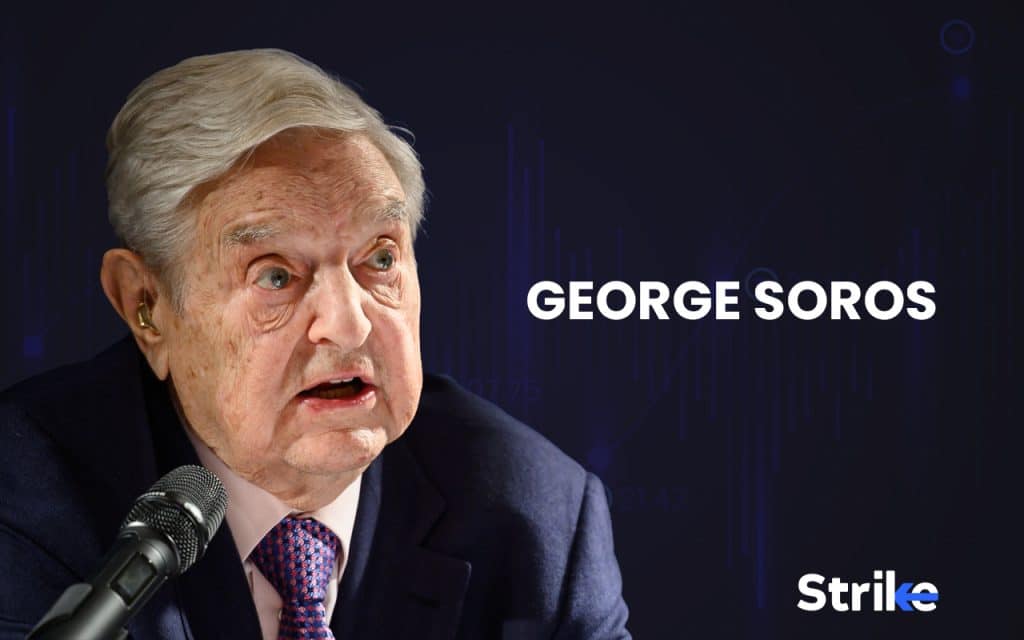
George was born in Budapest, Hungary on August 12, 1930. Soros belonged to a well-to-do family but he had his childhood disturbed by the Nazi’s arrival in the year of 1947 when he was just 17. As a result of this, he and his family emigrated to London where George continued studying at the London School of Economics. Later, George started his career in banking with a London merchant bank Singer & Friedlander. He then moved to New York City and worked as an analyst and eventually founded his first ever hedge fund called “Double Eagle”, in 1969.
From the money he earned running Double Eagle, Soros established Soros Fund Management in 1973. In the coming years, Double Eagle was renamed as “Quantum Endowment Fund”. George’s aggressive investment decisions made his investors a fortune. But it was on 6th September 1992, the day on which Soros became a renowned figure in the world of investors and traders.
In 1992, other European nations started pressurizing England to devalue its currency. At that time, England was a part of the collective system of exchange of rates between various European nations. This system was called the exchange rate mechanism (ERM). George knew that England would eventually end up devaluing its currency. Thus, he took a $10 billion short sell position on the British pound by using leverage and after resisting for some time, England decided to devalue its currency which made Soros a profit of $1 billion in a single trade. This trade is considered as one of the greatest trades of all. This earned him the nickname as “The man who broke the Bank of England”.
Soros’s instinct and risk tolerance of sticking to his bet for the longest periods makes him unique from most of fund managers. He is always updated about the latest developments at a global level. This helps him in taking highly leveraged trades with conviction.
George Soros has a net worth of $8.6 billion dollars. Soros has donated much of his wealth to a charity he founded called the Open Society Foundation.
2. Michael Burry
Michael Burry is a successful American trader and an investor who’s primarily known for rightly predicting the 2008 financial crisis. Burry is also a licensed physician who specializes in neurology. Michael Burry’s fame became much more evident after the release of a film called “The Big Short”.
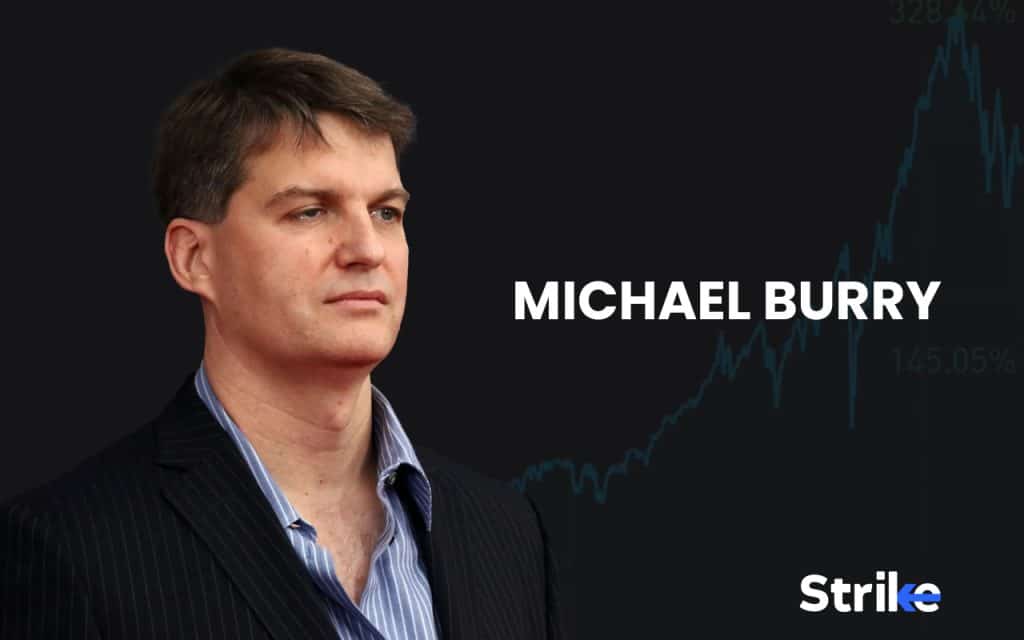
Michael was born and brought up in San Jose, California on June 19, 1971. When he was just 2 years old, he lost the vision in his left eye to a rare type of cancer called retinoblastoma. Doctors put in much effort but were not able to save his eye and Burry has been living with an artificial left eye ever since. Due to this incident, he decided to become a medical professional.
Burry got his bachelor’s degree in economics from California and then got an MD from a medical school. This was the time when he used to do investing as a hobby. He used to finish his duties during the day and work on his hobbies at night. Though he was doing his residencies at Stanford University, he decided to leave Stanford in the third year of his residency to fully focus on his career in investing.
Michael Burry started his own hedge fund called Scion Capital in 2000. At the beginning of 2007, Burry started to notice that people started to default on their mortgages. These high-risk mortgages were introduced as a result of the boom of the housing market in 2000s which motivated more lenders to offer home loans based on a very poor system. Michael Burry predicted a housing market crisis and started to short CDOs (Collateralized Debt Obligation). As the real estate bubble started bursting, Burry made a profit of $100 million dollars for himself and $700 million for his investors. There is also a movie made on this specific event called “The Big Short”. Burry became known as the Big Short investor after the release of this film.
Michael Burry has a contrarian mindset. Meaning, he likes to bet against the herd and is often seen contradicting the things usually believed by the masses. He also considers himself as a value investor.
As of now, Michael Burry’s net worth stands at $300 million.
3. David Tepper
David Tepper is known as one of the best hedge fund managers of the 90s. Tepper co-founded a hedge fund called Appaloosa Management L.P. As of 2022, Appaloosa management manages assets worth $ 3.82 billion, this has come down from a peak of $20 billion as the hedge fund is returning investor’s money. This has earned Tepper the reputation of being one of the most successful billionaires of all time.
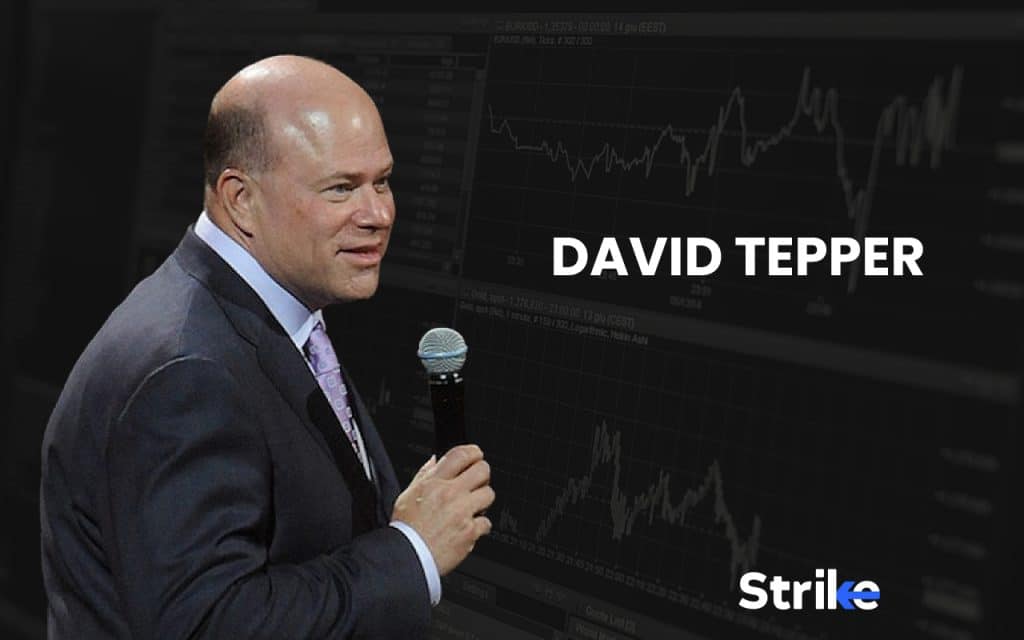
David was born on 11th September, 1957, in Pennsylvania, USA. Young David was always fascinated with the game of basketball and football. This led him to buy the professional football team Carolina Panthers later in 2018. He had started investing on a very small scale when he was in college. Eventually, Tepper got a bachelor of arts degree in economics from the University of Pittsburgh.
David started his professional trading career with a bank named Equibank. He worked as a credit analyst in their treasury department. But shortly thereafter, Davis decided to quit his position in order to pursue further education. He secured an MBA and in 1985, Tepper got recruited as a credit analyst in Goldman Sachs in the high-yield debt team in New York City. David became the head trader within 6 months of joining and remained in that position till he left the job seven years later. The experience he got while working made him a specialist in an investment style called distressed debt investing. In 1993, Tepper co-founded Appaloosa Management L.P. with Jack Walton.
Contrary to all the traders who made money shorting the market in the 2008 financial crisis, Tepper made a fortune by investing in banks like Bank of America and Citibank. Tepper knew that the U.S. government would intervene to save banks, so he bought $2 billion worth of commercial mortgage-backed securities. Appaloosa Management made a profit of $7 billion in the crisis of 2008. The trades executed by David Tepper throughout 2008 are considered one of the greatest trades ever made.
David Tepper specializes in Distressed debt investing. This means that he buys the debt of a distressed company at a discount and makes a huge profit once the company stabilizes.
According to Forbes, David Tepper’s net worth is $18.5 Billion. This makes him one of the greatest successful traders of all time.
4. Jim Rogers
James Beeland Rogers Jr. or Jim Rogers is a legendary investor and the Chairman of Beeland Interests, Inc. Rogers also co-founded the Quantum fund with another legendary figure, George Soros. He is mostly known because of his books which cover his worldwide adventures while trading and investing in commodities and the stock markets of all around the world.
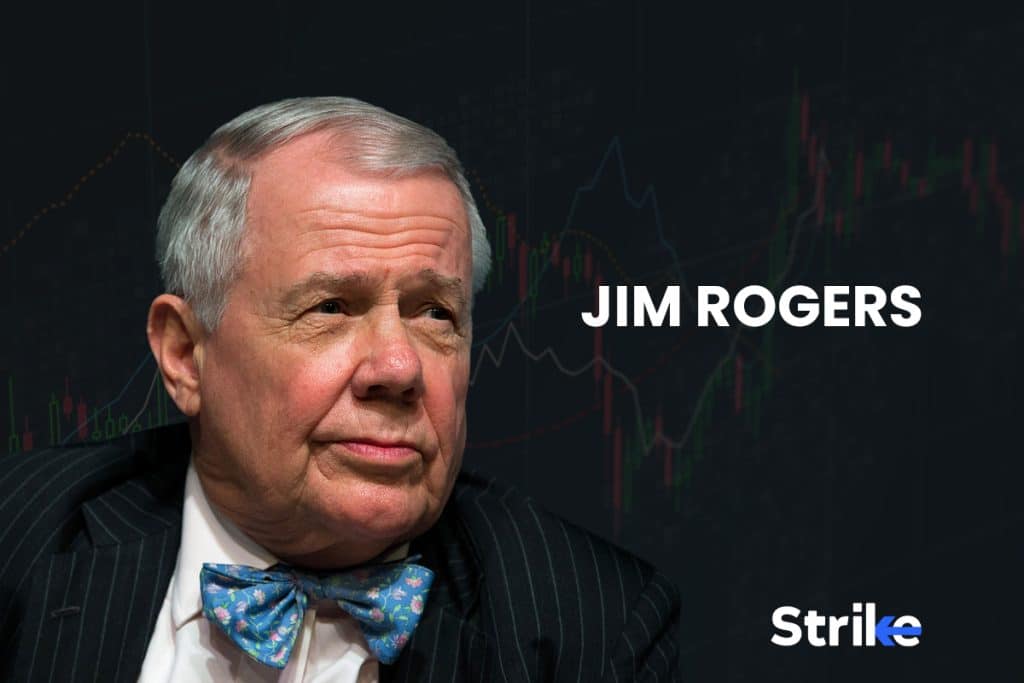
Rogers was born on 19th October, 1942, in Baltimore, Maryland. Jim started doing business at the age of 5. He used to sell peanuts during baseball games and pick up empty bottles later when the game was finished.
Jim finished his schooling and went to the University of Yale to study history in 1964. After graduating from Yale, Rogers got his first job. He worked with Dominick & Dominick on Wall Street. Jim got exposed to the world of stocks and bonds for the first time while working on this job. He then went on to acquire a second degree in philosophy, politics, and economics from Oxford University in 1966. In 1970, Rogers joined the investment bank of Arnhold and S. Bleichroeder. Here he met his future business partner George Soros.
Both of them left the bank in 1973 to start a hedge fund together called the Quantum Fund. Over the next years, Soros and Rogers made billions for their investors and Quantum Fund became one of the very few super successful hedge funds during that decade. While working together, Rogers and Soros grew their investor’s money by a whopping 4,200% in just 10 years! Rogers then decided to retire at the age of 37 in 1980.
Jim Rogers became known largely because of his bullish calls on commodities during the 1990s and also for his books which covered his adventures all around the world while investing in commodities and the stock markets worldwide.
Jim Rogers’s way of trading and investing is risky. He does not shy away from betting money based on his research and vast knowledge about the financial markets all around the world. His expertise has always inspired a lot of people to read his books and invest in the markets.
As of today, Jim Rogers’s net worth stands at $360 million.
5. John Paulson
John Paulson is an American billionaire hedge fund manager and a successful investor. Paulson is the founder of one of the most famous hedge funds called “Paulson & Co”. John is also known for making a huge amount of money from the mortgage crisis. His trades during that period are also regarded as one of the greatest trades ever in the history of wall street.
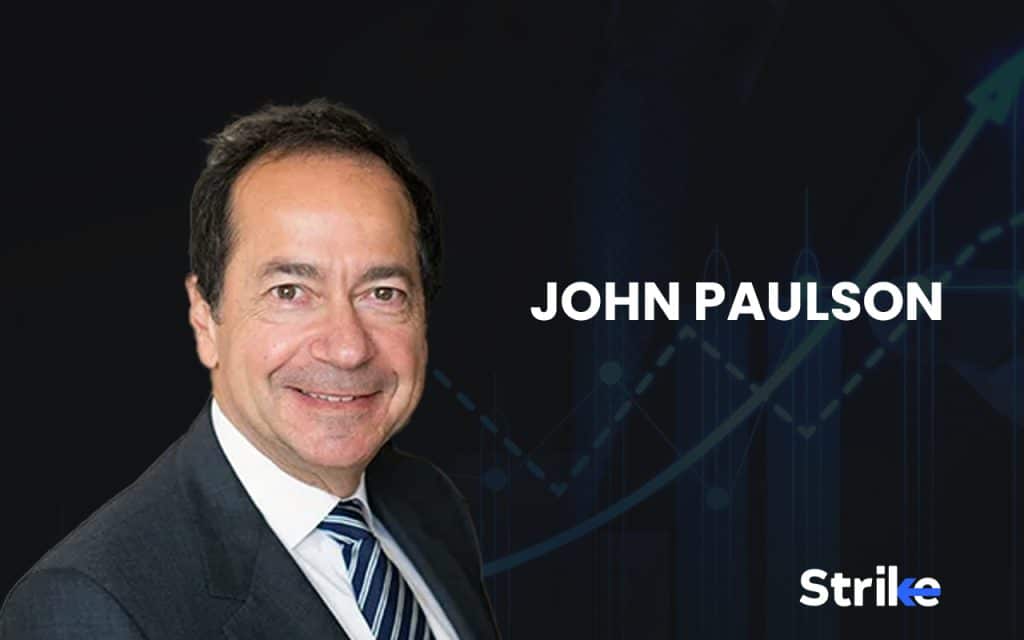
John Alfred Paulson was born on 14th December, 1955, in Queens, New York. He completed his schooling from a public school in New York City. He shared an innate passion for business just like his father. After completing his high school graduation, John moved to Ecuador to start his first business ever. He started an import-export business that would export children’s clothes to New York. But after some time, he realized that the profit margins in this business were not as he expected and John returned to New York for his further studies.
Paulson did his MBA from the Harvard Business School, New York University in 1980 and began working as a consultant in Boston Consulting Group. He then went on to work with Bear Sterns where he gained much knowledge and expertise about mergers and acquisitions of businesses.
Finally, in 1994, Paul decided to start his own hedge fund in Manhattan called “Paulson & Co”. The company was very small at the beginning with just one working employee, but Paul’s expertise and knowledge about the market helped him grow his fund exponentially within a decade. In 2003, Paulson & Co managed assets worth $300 million.
John’s peak career moment came during the mortgage crisis. He predicted the crisis beforehand and started to bet against the U.S. housing market heavily. John’s conviction earned him a personal profit of $4 billion in 2007 as the markets continued to fall. John reached the top with this and Paulson & Co became a name everyone knew. John Paulson’s trades in the mortgage crisis are also called one of the greatest trades in the history of wall street.
John specializes in even-based investments such as mergers, acquisitions, etc. This style has earned him billions over the years.
According to Forbes, John Paulson has a real-time net worth of $3 Billion.
6. Paul Tudor Jones
Paul Tudor Jones is an American billionaire hedge fund manager and is the 324th richest person in the world. Paul is the founder of a $11.2 billion hedge fund called Tudor Investment Corporation. He is renowned for rightly predicting and shorting the stock market crash of 1987.
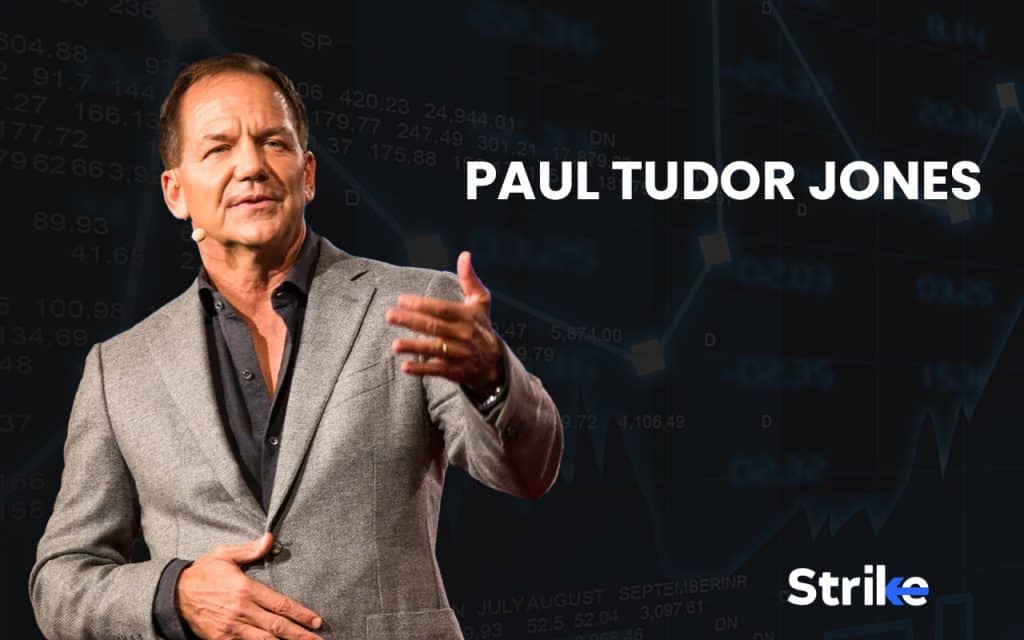
Paul Tudor Jones was born on 28th September, 1954, in Memphis, Tennessee. Jones graduated from an all-boys elementary school and then studied at the University of Memphis to complete his high school. He then went on to the University of Virginia to complete his undergraduate degree in economics in 1976. While he was a student at the University of Virginia, Jones used to write for his family publication to pay for his tuition fees.
After graduating, Paul started to work as a clerk on the trading floor. He applied for Harvard Business School and was selected. But he decided not to attend Harvard because he found his passion on the trading floor. Soon after this, Paul met with Eli Tullis. Eli Tullis was one of the most successful cotton traders of the time and he mentored Paul Jones. He taught him how to be successful in the highly competitive world of trading.
Paul Jones then became a commodities broker for E.F Hutton & Co. After working there for several years, Paul started his own hedge fund called Tudor Investment Corporation in 1980. Paul capitalized on a very big opportunity that he saw coming towards the crash of 1987.
John was able to figure out the effect created by the portfolio insurance in a bear market. Portfolio insurance involves buying index put options as the market falls. He shorted the market and tripled his capital on the Black Monday of 1987. This trade was one of the biggest successes of his career.
Tudor does not specialize in any one specific market, he takes a macro approach while trading in investment securities. He makes his trading decisions solely based on what the price is telling him without any help from computers and algorithms. Paul also considers himself the most conservative investor in the world.
As of today, Paul manages a hedge fund worth $11.2 billion and has a net worth of $7.5 billion.
7. Jesse Livermore
Jesse Livermore is one of the most famous traders of all time. Jesse’s life was full of ups and downs, he made and lost fortunes many times throughout his trading career. Jesse Livermore is also known as a trader who made the most amount of money in a day and lost the most amount of money in a day. Though Livermore traded a century ago, his methods and lessons continue to impact traders even now.
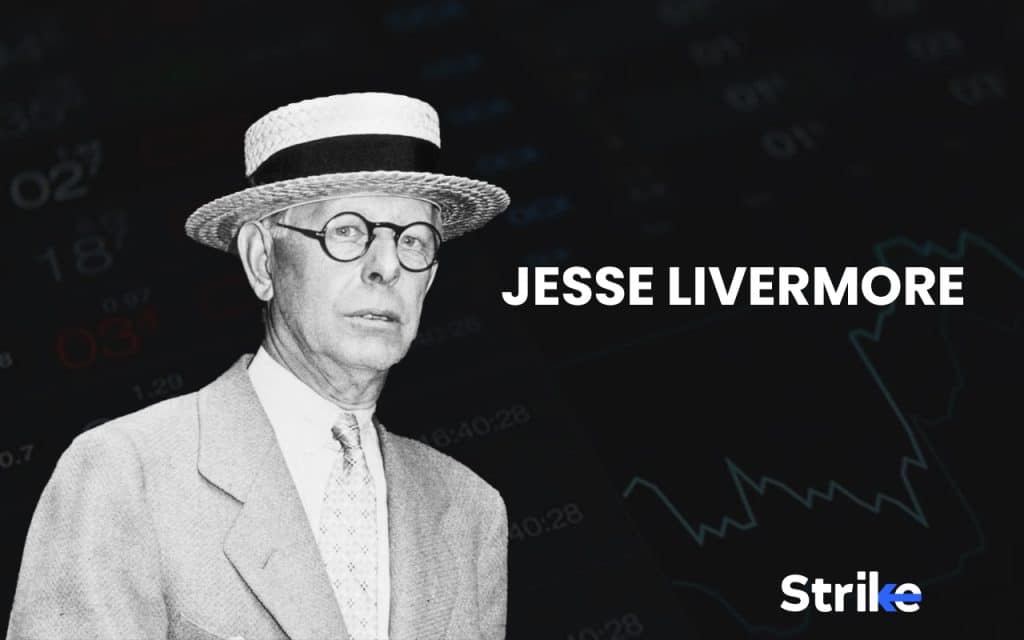
Jesse Livermore (26th July, 1877 – 28th November 1940) was born in Shrewsbury, Massachusetts. Jesse grew up in a poor family. Jesse’s father was a farmer. As a result, Jesse only studied elementary school and left home with the help of his mother at the age of 14.
Jesse came to the city of Boston and worked as a chalk boy at a brokerage firm called Webber & Co in Boston. This job was ideal for him as Livermore loved numbers. This is where Jesse found his passion for trading the markets. At the age of 15, He was trading at local bucket shops where people used to gamble and place bets on stocks. He had made so much money trading at the bucket shops that he decided to leave his job and trade full-time. Gradually, he became so good at it that he was nicknamed “The Boy Plunger” and most of the bucket shops started banning him.
In 1900, Jesse moved to New York. In the following years, Livermore made a name for himself on wall street. Jesse’s one of greatest trades came in the panic of 1907. He had shorted the market and made $1 million in a single day. But just after a year, he listened to a fellow trader and lost all of his fortunes. Jesse had to file for bankruptcy in 1908. He did recover all of his losses but filed for bankruptcy again in 1915. But Jesse did not lose hope. Making a comeback in the game, Jesse recovered all of his losses once again. In the crash of 1929, Jesse had made over $100 million.
In 1934, Just after 5 years of making $100 million dollars, Jesse filed for bankruptcy again and no one knows the exact reason of why he ended up losing all of that money. On, 28th November 1940 Jesse committed suicide in his hotel room in Manhattan.
Unlike other successful traders, Jesse traded based on his own system and used his own capital. Jesse traded based on the price patterns he had observed and he always waited for the market to confirm his analysis. The trading rules he had written for himself are still valid in today’s market.
At the peak of his career, Jesse had amassed a massive net worth of $100 million in the year of 1929.
8. Steve Cohen
Steve Cohen is an American multi-billionaire hedge fund manager. Cohen is a majority owner of the New York Mets of the Major Basketball League making him the richest owner in basketball. He is also the founder and CEO of Point72 Asset Management. Steve is also the founder of SAC Capital Advisors which was once regarded as the most successful hedge fund until the SEC forced SAC Capital Advisors to stop handling outside investments from outsiders in 2013.
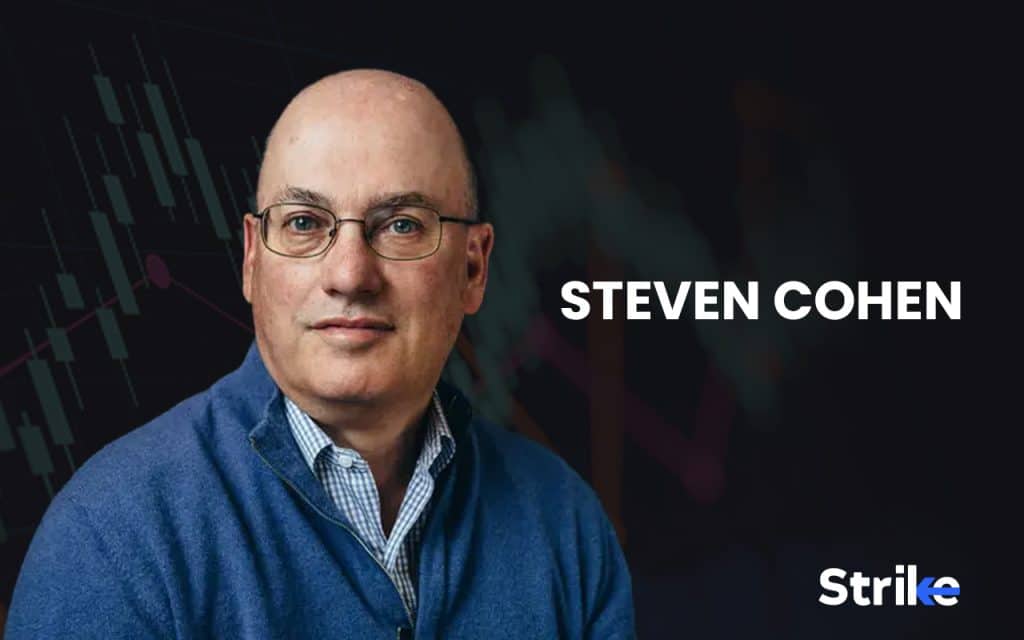
Steve Cohen was born on 11th June 1956, in Great Neck, New York. Cohen started playing poker when he was in high school and often credits the game for teaching him how to take calculated risks. He later left New York and attended the Wharton School of Business at the University of Pennsylvania. He graduated with a degree in Economics in 1978.
After graduation, Cohen started to trade for a bank called Gruntal & Co as a junior options trader. Eventually, he became so good at his job that Cohen was earning an average of $100000 a day. He continued to learn and gain expertise as he managed a portfolio of $95 million and a team of 6 traders. In 1992, Steve left Gruntal & Co to open his own hedge fund called SAC Capital Advisors.
SAC became a huge success and by 2006, Cohen’s firm was accounting for 2% of all stock market activity. For nearly two decades, SAC continued to give annual returns of 25% to their investors. But all of this came to a halt when the SEC indicted several of SAC’s employees for insider trading. The firm pleaded guilty and was forced to stop handling outside investments in 2013. In 2014, Steve founded another hedge fund called Point72 Ventures.
Steve Cohen’s approach towards trading is mainly based on working with a team of really talented people and executing high-risk – high rewards trades in the market. In an interview, Steve also said that more than half of his trading decisions are based on gut instincts.
According to Forbes, Steve Cohen has a net worth of $17.5 billion and is the 92nd richest person in the world.
9. Nick Leeson
Nick Leeson is a former derivatives trader who is best known for being the man who single-handedly bankrupted England’s oldest merchant bank. Leeson has had to serve in jail for 4 years and his fraudulent activity has made banks all around the world to be aware and improved their internal systems.
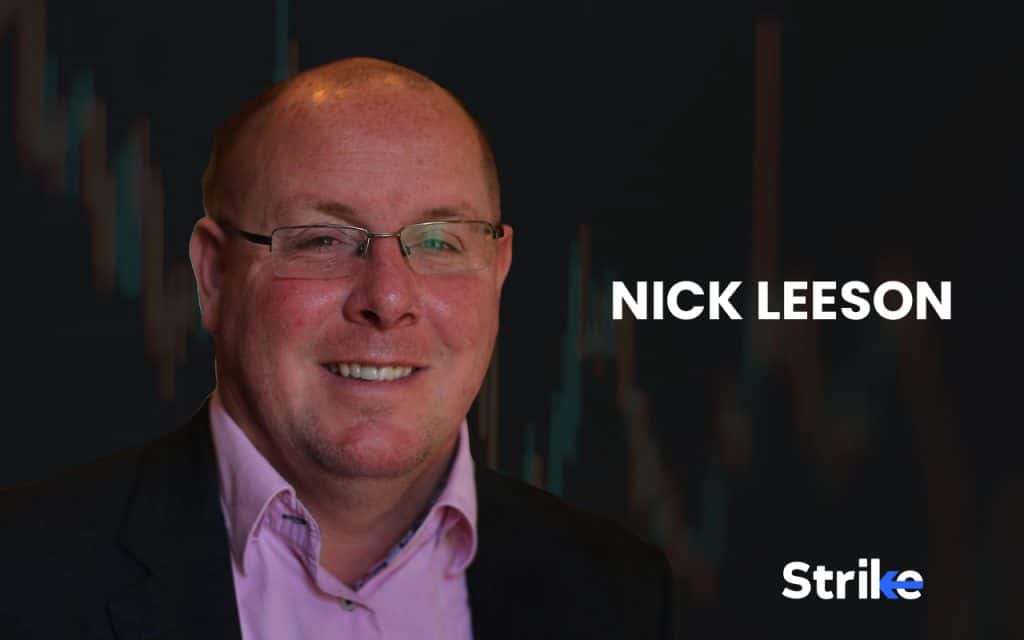
Nicholas William Leeson was born on 25th February 1967, in Hertfordshire, England. Leeson completed his secondary education but did not go to a university for further studies. Instead, he got a job and worked as a clerk at Coutts Bank. Leeson gradually upskilled himself in the finance industry and worked with banks like Morgan Stanley.
In 1989, Nick started working with the oldest merchant Bank in England called Barings Bank. Eventually, he rose up to the top and became the star trader of Barings Bank at the age of 27. Leeson earned his employer millions of dollars through his knowledge and skills. And as a result, he was transferred to Singapore to lead a new operation of futures markets for the Singapore International Monetary Fund.
Things turned against Leeson when he opened a new account named “88888” to hide and recover the losses made by one of Leeson’s co-workers. This move turned out to be a big mistake as Leeson started to make huge losses in the chase of recovering the loss made by his co-worker. In 1995, as the Kobe earthquake hit Japan, the Nikkei (The index of Japan) fell sharply. As a result, Leeson made huge losses because he had bet that the Nikkei would rise. He exploited more of Barings capital, driving the total tally of his losses to $1.3 billion. This caused the collapse of the Barings Bank. In 1995, Leeson was convicted and sentenced to 6 years of prison time in Singapore but he was granted an early leave just after 4 years due to a colon cancer diagnosis.
Nick Leeson used to trade with a doubling strategy. Meaning, every time he lost money in a trade, Nick used to place a bet that was double the amount of loss he had made. This strategy resulted in the collapse of England’s oldest merchant bank.
As of today, Nick Leeson’s net worth stands at $3 million.
10. James Simons
James Simons is an American billionaire hedge fund manager and philanthropist. Simons is also arguably the richest mathematician on the planet. He has taught mathematics in Universities like MIT, Harvard University and Stony Brook University.
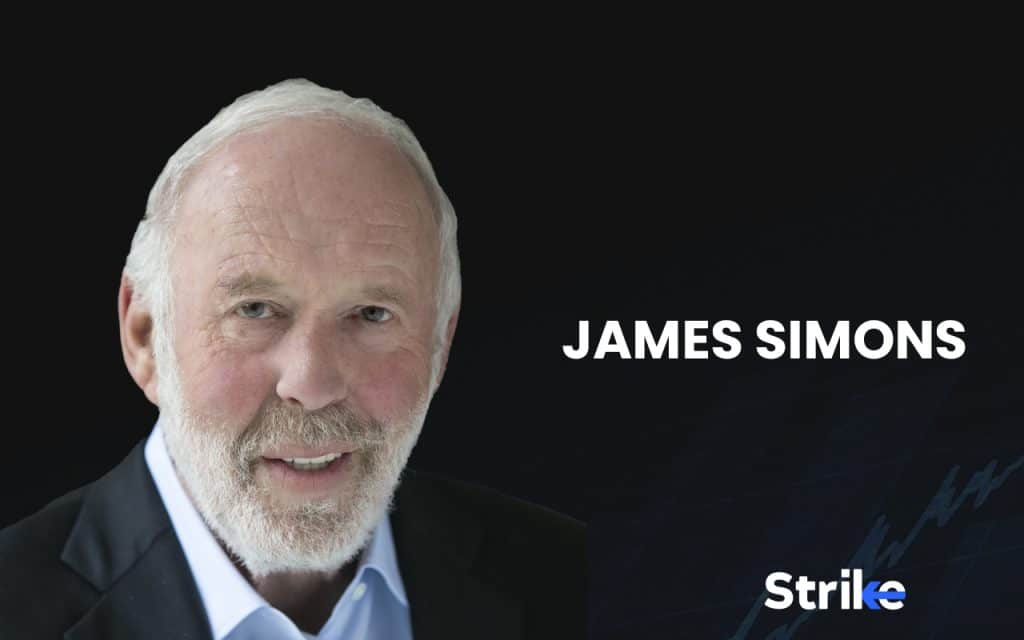
James Harris Simons was born on 25th April 1938, in Brookline, Massachusetts. Simmons received a bachelor’s degree in mathematics from the Massachusetts Institute of Technology in 1958. He then went on to earn a Ph.D. in mathematics from the University of California, Berkeley in 1961. In 1964, during the Vietnam War, James worked with NSA (National Security Agency) as a codebreaker. He was also on the research staff at the Institute for Defense Analyses till 1968. He then decided to quit because he opposed the war in Vietnam.
In the following years, he taught mathematics at universities like MIT, Harvard University and Stony Brook University. He had a much more productive and successful career teaching math, but despite this, he still had a longing for a career in finance. In 1978, Simons launched his own hedge fund called Monemetrics. Simons used mathematical models to identify certain patterns. He developed an investment system with quantitative models and his hedge fund became famous for hiring people like mathematicians, statisticians, physicists, and signal processing experts who had a non-finance background. Renaissance Technologies and its flagship fund called Medallion Fund was soon established in 1982.
As of today, Renaissance Technologies manages $55 billion and the Medallion fund which is closed to outside investors has earned over $100 billion in profit since it was established.
Jim Simons uses quantitative methods to trade the markets. These models collect as much data as possible and execute probable trades with the help of the collected data. Due to his Quantitative analysis and algorithmic investment strategies, Simons is often referred to as the “Quant King”.
According to Forbes, James Simons has a real-time net worth of $28.1 billion and he is currently the 47th richest person in the world.
11. Richard Dennis
Richard Dennis is one of the most successful traders of all time. Dennis was so good in trading that he was often referred to as the “Prince of the Pit”. Richard is mostly known for conducting the turtle experiment with his partner William Eckhardt.
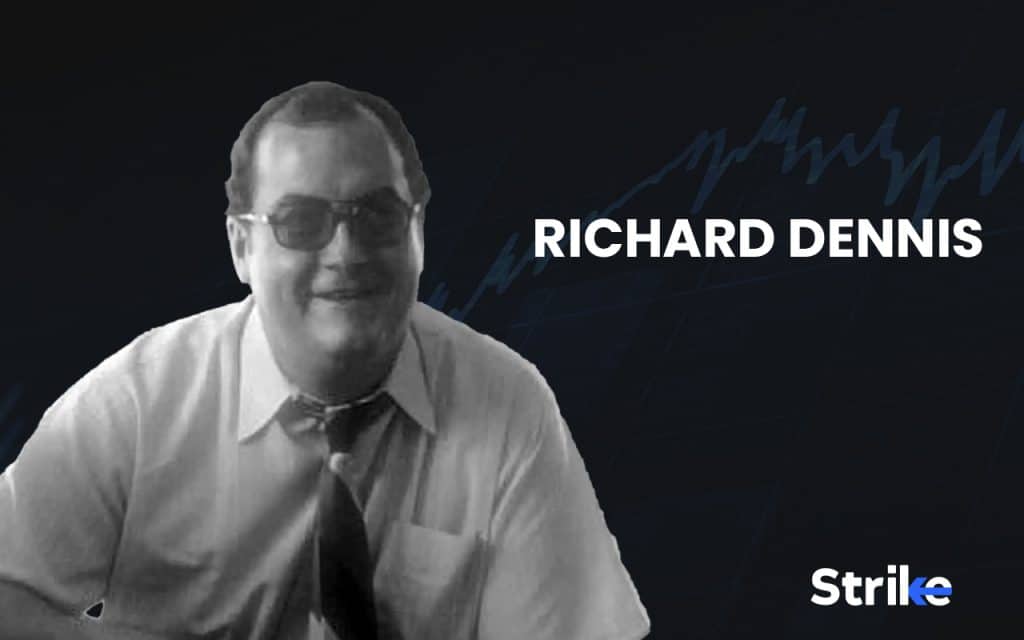
Richard J. Dennis was born in January 1949, in Chicago. He attended an all-boys school called St. Laurence Prep School. As a kid, Dennis was naturally good at poker and the game helped him understand the nature of odds very well. At the age of 17, Richard became an order runner at the Chicago Mercantile Exchange. He hired his own father to trade for him when age restriction laws prevented him from trading.
Richard earned a bachelor’s degree in philosophy from DePaul University. And returned from his higher studies to trade the markets.
In the early 1970s, Richard borrowed an amount of $1600 from his family. This amount got reduced to $400 because he had to spend $1200 to get a seat at the MidAmerica Commodity Exchange. But within 3 years, he grew that $400 dollars into $100000. At the end of 1974, Richard had already become a millionaire.
Richard always believed that successful trading can be taught and proved his point when he conducted an experiment called “The Turtle Experiment”. He taught his recipe for becoming a successful trader to 21 men and 2 women in 2 batches. One was conducted in December 1983 and one in December 1984. To everyone’s surprise, these people turned out to be successful traders in a very short span by just following simple trading rules and systems taught by Richard.
While other traders scalped their trades and took several trades within a day, Richard used to hold his positions for a longer time. He rode short-term fluctuations to catch the main trend and often pyramided his positions to maximize his profit. Richard believes that patterns tend to reappear and hence follow a purely technical and trend-following approach.
At the peak of his trading career, Richard reportedly had made a fortune of $200 million in just 10 years by following his simple trend-following trading system.
12. Thomas Bulkowski
Thomas Bulkowski is an American author and an investor. Bulkowski has written multiple fiction and non-fiction books related to finance. He is also a successful trader with an experience of more than 40 years.
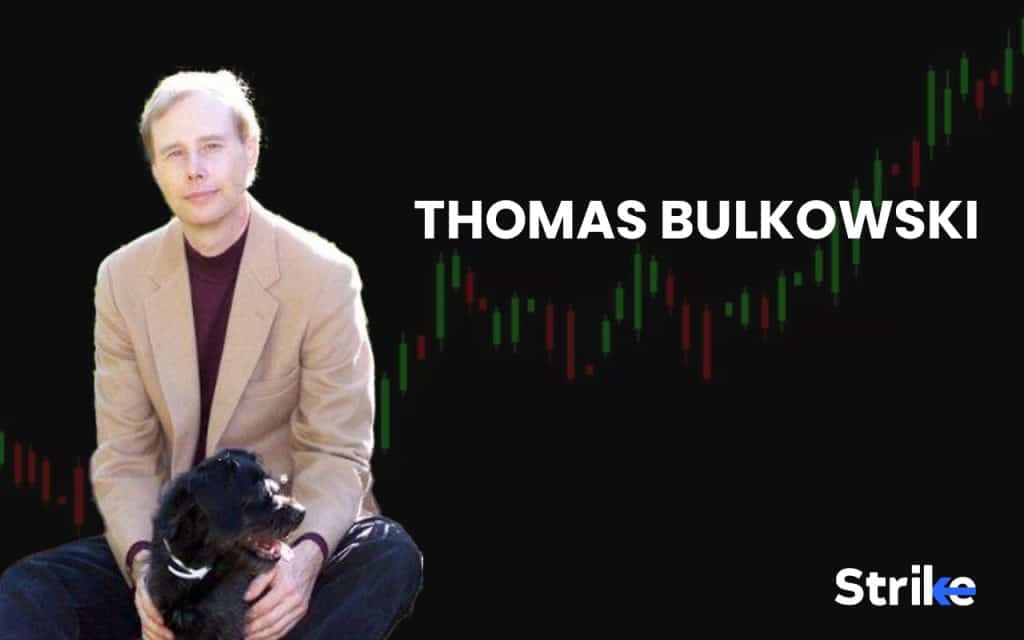
Thomas Bulkowski was born in 1957, in New York. Thomas had worked at several jobs as a hardware design engineer, a senior software engineer, and a software manager. And at the age of 36, he decided to retire with a decent investment portfolio.
In 1995, Thomas wrote his first article that got published in Technical Analysis of Stocks & Commodities magazine. In 1997, he wrote his first-ever book called “Encyclopedia of Chart Patterns”. Since then, Bulkowski has gotten featured in magazines and has written many fiction and non-fiction books related to finance.
Bulkowski believes that price is the best indicator. He only uses price to trade the markets. Thomas also looks at the fundamentals of the company before analyzing the technical chart of the stock.
13. William Delbert Gann
William Delbert Gann was an American finance trader and author. Gann is surely one of the most mysterious and controversial figures among all of the successful traders that ever existed. People who follow him believe that he was the greatest trader of all time and others think that all of his wealth came from the books and courses he sold and not from his investment itself.
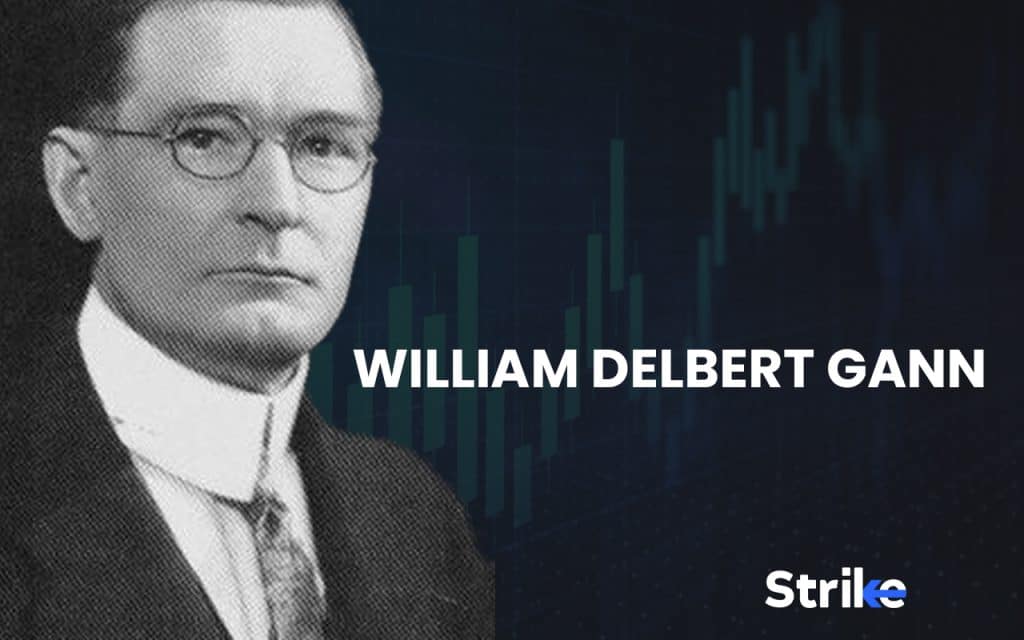
William Delbert Gann (June 6, 1878 – June 18, 1955) was born in Texas. Gann never finished his grammar school as well as his high school and educated himself by reading the Bible. Gann started trading at the age of 24 in 1902. Just a year after this, he moved to New York and worked at a Wall Street brokerage firm. Eventually, Gann opened his own brokerage firm and started creating his own investment models learning from the mistakes his clients made.
In 1919, Gann started making yearly forecasts of stocks and commodities by publishing his newsletter called “The Supply and Demand Newsletter”. He also did his second publication in 1923. Throughout his career, Gann sold books and trading courses which taught his self-made investment models and provided various trading indicators.
Gann used geometry, ancient mathematics, and astrology to predict events in the financial markets. He developed his own technical setup called Gann angles. Gann also believed that market events repeated across specific time cycles and all of the indicators he made were built on this premise.
Two of the most significant time cycles Gann believed were – 1. 60-year cycle and 2. 90-year cycle. Gann also predicted the potential financial crisis of 2019 based on his 90-year cycle theory which was followed by the crisis of 1929.
William Delbert Gann’s net worth has always remained controversial. His critics believe that he was worth slightly above $100000 when he died but according to other sources, Gann had a net worth of around $1-5 million.
14. Dr. David Paul
Dr. David Paul is a Northern Ireland-based forex and stocks trader. Dr. Paul conducts seminars teaching intraday trading in forex and stocks. He also helps traders to have the right mindset to earn consistently from the markets.
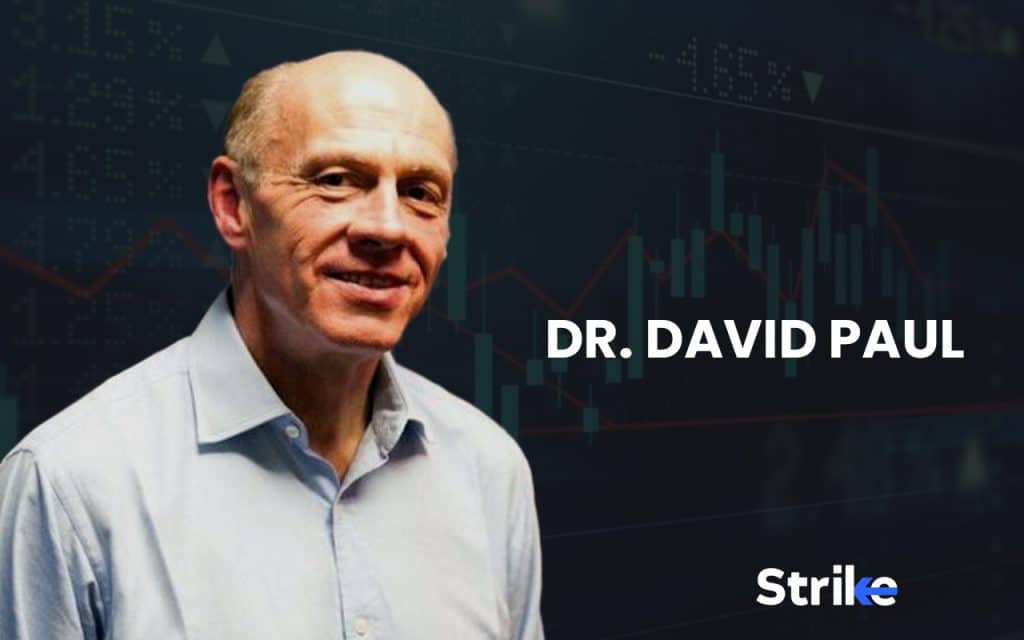
Dr. David Paul was born on 19th July 1955, in Northern Ireland. He completed his schooling at the Rainey Endowed School. He then went to the Queen’s University of Belfast and got a BSC degree in Mechanical Engineering and Completed his Ph.D. in Mechanical Engineering in 1981.
Dr. Paul immigrated to South Africa in 1981 and joined an Anglo group where he was the head of engineering research for Boart International. He started trading the markets in this period. After a decade, Paul launched his own engineering company that manufactured mining tools for the South African market. He sold his company in 1992 and started developing and conducting his trading seminars and courses.
Since then, Dr. Paul has been actively trading the markets while conducting a lot of seminars across South Africa and the UK. His course is specifically designed for short-term trading in futures and forex. He also has made a course that puts emphasis on developing the right mindset for being profitable consistently in the market.
Dr. Paul’s trading approach is mainly based on finding companies that suit certain criteria. This criteria looks at prerequisites like – The stock must be undervalued and growing in revenues aggressively and the market should be in an upswing while taking a trade.
15. Bill Gross
Bill Gross is an American billionaire bond investor, author, and renowned philatelist. Gross is often called the “Bond King”. He also co-founded the largest active fixed-income management firm in the world called PIMCO (Pacific Investment Management Company).
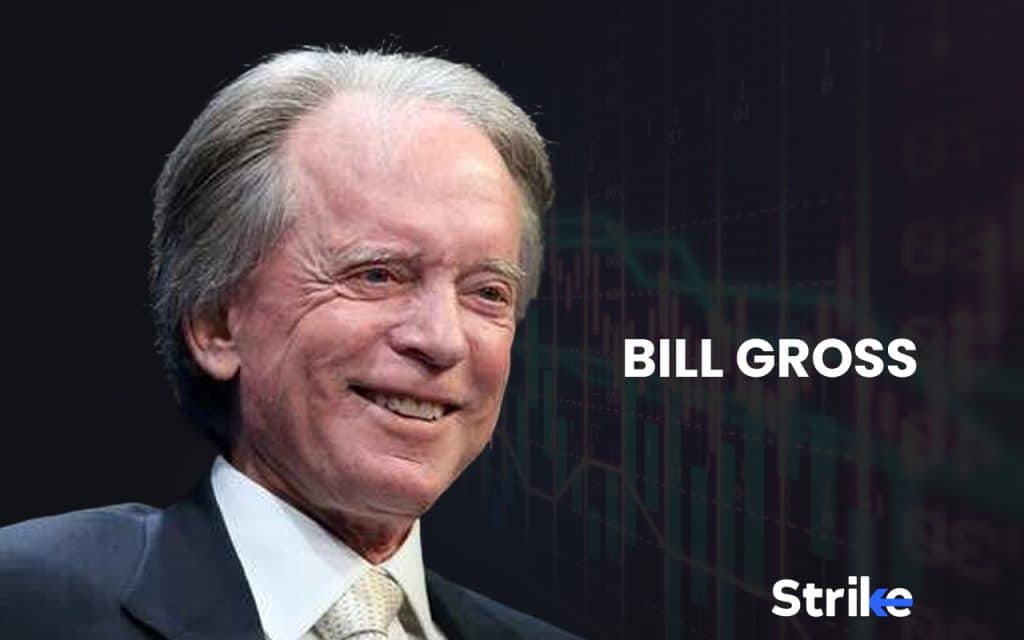
William Hunt “Bill” Gross was born on 13th April 1944, in Middletown, Ohio. Bill attended Duke University and earned a bachelor’s degree in Psychology in 1966. For the next 3 years, Gross served in the U.S. Navy as the assistant chief engineer. He left the Navy in 1970. He also earned an MBA from the UCLA Anderson School of Management in 1971.
Gross used to enjoy poker and has said that the game helped him in understanding risk and calculate odds. In 1971, Gross founded his own firm called Pacific Investment Management Company, PIMCO with 2 of his friends. PIMCO provided the first investable market for fixed-income securities that was available for all investors. Soon, the bond king controlled more money than anyone in the world. It is also said that no other fund manager has made more money for their investors than Bill Gross.
Gross invented the active and aggressive approach toward bonds. Before PIMCO, bonds were rarely traded. However, PIMCO started to trade bonds very actively. As of today, PIMCO manages assets nearly worth $2 trillion making it the largest active fixed-income fund management firm in the world.
Following the 2008 financial crisis, Gross became a national hero as he helped in the revival of poor banks in an attempt to revive the economy.
Gross beat the market for most of his investment career. He looked for variables like credit ratings, yield maturities, duration, etc. And made educated predictions about the factors affecting the bonds.
According to Forbes, Bill Gross has a net worth of $1.6 billion as of today.
What is the stock market?
A stock market is a place where forces of demand and supply help in deciding the prices of listed stocks on the stock exchange. These forces of demand and supply are created by the hundreds of thousands of market participants who buy and sell the stocks frequently. This makes the prices of stocks very volatile.
The stock market is also known as the economic barometer. Meaning, it shows the current economic condition of the economy. The stock market has given a platform to investors wanting to invest their money and companies who are in need of funds.
It also provides a regular income source for traders and investors. Investors enjoy regular earnings through the dividends of stocks whereas, traders earn through speculating in a stock on a daily basis. The stock market has always outperformed every other asset class. This is why most of investors get attracted to investing in equities.
3 major benefits of the stock market are as follows –
- Makes analyzing the health of the economy very easy.
- Helps in accelerating the growth of an economy.
- Helps investors in generating long-term wealth as the economy grows.
What is a stock market trader?
Stock market traders are people who look to profit from the short-term price fluctuation of a stock’s price. Stock market traders play a very crucial role in the markets by providing liquidity. This helps both the investors and other traders as well. Traders are also called speculators of the stock market.
Stock market traders are major of 2 types –
- Retail or Individual traders –
Retail or Individual traders work on their own and use their own capital to trade the markets. The majority of retail traders do not have a large capital. Hence, they cannot affect the market individually.
- Institutional traders –
Institutional traders are employees hired by financial companies to trade on their behalf. As a result, the capital which these traders have is much bigger than retail traders. These traders hold the capacity to move the market individually.
What does a stock market trader do?
Stock market traders buy and sell stocks with the sole aim of earning profit. Stock traders do this by following a strategy.
Stock traders make their own strategies while others follow a strategy they learned via books, courses, or Youtube videos. The majority of stock traders are hardcore analysts. Their strategies include the use of technical indicators and observing specific price patterns in the stock’s price chart.
There are different styles and approaches to stock trading. For example, Scalpers enter and exit from their position in a matter of minutes while an intraday trader will hold the stock for a much longer period before exiting from his position.
Who is the most successful day trader?
There are a lot of successful traders but Jesse Livermore is often regarded as the most successful day trader. His success came from trading on the capital earned by himself and by trading on setups made by himself.
Jesse Livermore started getting banned from local bucket shops (At the time people used to bet on stocks at bucket shops) at the age of 15. As a kid, Livermore used to note the price changes in stock in his diary. He developed his trading method by noticing several patterns from these price changes.
In the panic of 1907, Jesse made a profit of $1 million shorting the market. At the time, this was one of the biggest profits made in a single trade. This is how Jesse earned the title of greatest day trader in the history of wall street.
Jesse Livermore’s trading lessons are still relevant to date. He continues to inspire many traders even though he traded a century ago.
Who is the most successful swing trader?
James Simons (born – 1938) known as the “Quant King”, is also considered as the most successful swing trader in history. His success as a swing trader can be seen just by looking at his net worth which comes down to $28.1 billion. Simons is also referred to as “The Man Who Solved The Market”.
Founded by Simons, Renaissance Technologies uses quantitative methods to trade the markets. Today, Renaissance Technologies has an AUM of $55 billion and its flagship fund called the Medallion fund has earned $100 billion in profit since its inception.
These funds follow the methodology created by Jim Simons. Hence, he is the most successful swing trader in history.
Who is the most successful options trader?
The most successful options trader, who is also regarded as the most successful investor, is none other than the legendary stock market investor Warren Buffet. Warren Buffet needs no introduction as every investor and trader in the stock market knows him, and most of them value him the same as God.
According to reports, Warren Buffet makes billions of dollars every year just by selling put options. Most people do not know this but Buffett is arguably the largest option seller in the world.
Towards the end of the market fall of the 2008 crisis, Buffet sold put options of broad market indexes worth $4.9 billion betting that the markets will not go down any further. And he was right again.
Buffet’s immense knowledge and expertise make him the most successful options trader in history.
What are the different stock trading approaches?
Different stock trading approaches are being adopted by different types of traders. Stock trading approaches are broadly of 5 types –
- Scalping –
Scalpers are traders who enter and exit a large number of orders within a few minutes. The timeframe used by these traders can range from 30 seconds to 5 minutes.
Scalpers try to make money out of the tiniest price fluctuation in the price of a stock. This is why it is not recommended for beginners, only experienced traders with proper risk management make a profit while scalping.
As scalping does not aim to capture big moves, scalpers can take multiple trades within a single day to earn a decent profit.
- Intraday trading –
As the name suggests, an intraday trader enters and exits from a stock within a day. Intraday trading is the most famous stock trading approach among all other approaches. The timeframe used by these traders often ranges from 5 minutes to 15 minutes.
Only professionals make money from intraday trading and beginners can end up making huge losses as the markets tend to be very volatile in the short-term.
Intraday traders get the benefit of trading with a margin. They can use margins to leverage their positions to maximize their profit potential.
- Swing trading –
When a trader takes the delivery of the stock and holds it from a few days to several weeks, then it is called swing trading. The timeframe used by a swing trader to analyze the stock can be hourly or daily. Swing traders try to capture big moves as the duration of this type of trading is long compared to scalping and intraday trading.
Swing trading is less risky compared to intraday trading as a swing trader cannot buy stocks on margin. A swing trader can only hold stocks overnight if he has sufficient capital to pay the full price of the stock.
- Positional trading –
Positional traders hold their positions for even more duration compared to swing traders. The timeframe used by these traders is usually between daily to weekly.
A positional trader has to be patient. Along with technical analysis, a positional trader also has to look into the broad fundamentals of the company as the positions taken can be held for months.
Positional trading is mostly preferred by people who cannot put time and effort into the markets. As there is less fluctuation of prices in the long term, positional trading is considered to be the safest trading type compared to others.
- Momentum trading –
Momentum trading means buying stocks that are gaining momentum. Momentum traders seek to profit from a big sharp move in a smaller period.
Whenever a stock breaks long-term support/resistance, the stock moves in the direction of the broken support/resistance very sharply. Momentum traders look for this type of opportunity.
This type of trading can be risky because, if the breakout/breakdown turns out to be a fake one, the momentum trader can incur heavy losses.
Is there a benefit of knowing the life of these stock market traders?
Yes, It is beneficial to know the lives of successful stock market traders. Knowing about the lives of these stock market traders undoubtedly benefits us.
Most of the super successful stock market traders are self-made millionaires/billionaires. Studying how they made their fortune can provide us with lifelong lessons. These lessons help us avoid many mistakes and accelerate our growth. Another benefit of this is that we get to know about what made successful stock market traders different from the rest. Their life teachings provide us with things like the strategies they used, their advice for beginners, etc.
Do famous stock traders share their knowledge in investment with others?
Absolutely yes, Famous stock traders do share their knowledge in investment with others. Famous stock traders share their knowledge through books, podcasts, Youtube videos, courses, etc.
Is there a difference between a stock trader and a stock broker?
Yes, stock traders and stock brokers differ completely. There are 3 major differences between stock traders and stock brokers such as –
- A stock trader is a trader who buys and sells stocks with the aim of earning profit whereas, a stock broker is the middleman between the stock exchanges and their clients.
- Stock traders earn through buying and selling of stocks while a stock broker earns from commissions.
- Stock traders have to research and analyze the stock before taking a trade whereas a stock broker executes a stock traders order on behalf of him.
While there are differences between stock traders and brokers, both are interdependent on each other. Meaning, a stock trader cannot buy stocks directly from the stock exchange and a stock broker cannot earn with no clients.
Who are the best stock market traders in India?
- Rakesh Jhunjhunwala –
Rakesh Jhunjhunwala was a billionaire investor, chartered accountant, businessman and film producer. Jhunjhunwala was often called “The Warren Buffett of India”. He was also widely known as “The Big Bull of India”.
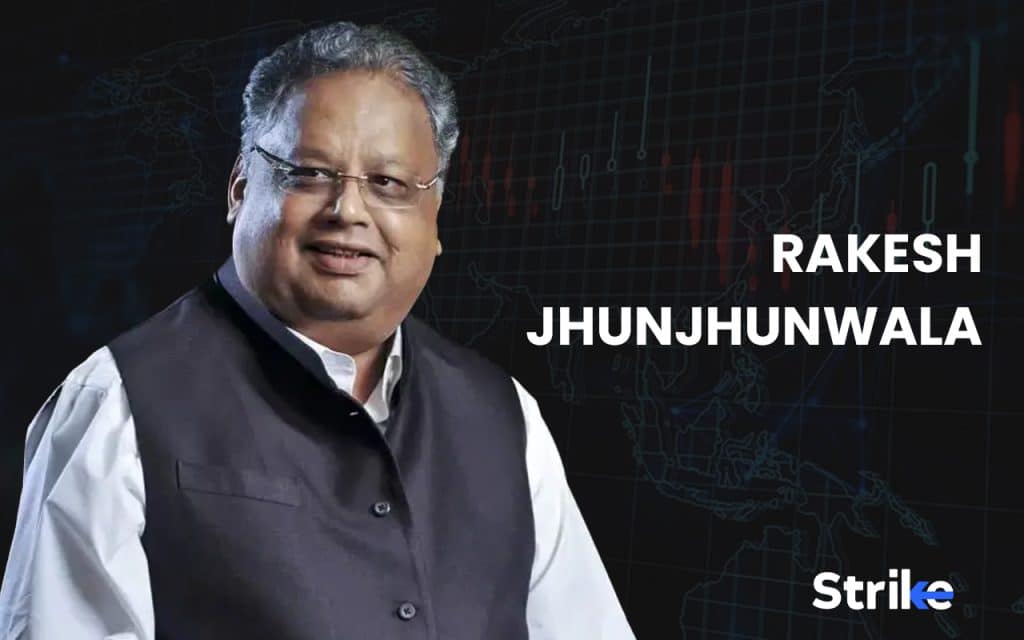
Rakesh Jhunjhunwala (5 July – 14th August 2022) was born in Hyderabad, Telangana but his family shifted to Mumbai when he was just 2 years old. As a kid, Rakesh grew up listening to his father talking about the markets with his friends.
In 1985, Rakesh became a chartered accountant and started investing his money. He started investing with just Rs.5000 and by the end of 1989, Rakesh had already made Rs. 20-25 lakhs in profit. Rakesh continued to make huge amounts of money by short-selling in 1992. This was the period when Indian markets were experiencing heavy beating.
Jhunjhunwala’s most famous investment is the one he made in 2002-2003. He bought the shares of Titan at an average price of Rs. 3. Jhunjhunwala held over 4.5 crore shares of Titan which is currently trading at Rs. 2468. His investment in Titan is currently worth Rs. 11,086 crores.
According to Forbes, Rakesh Jhunjhunwala’s real-time net worth is $5.8 billion and he was the 36th richest person in India.
- Radhakishan Damani –
Radhakishan Damani is a businessman and an investor. Damani is currently the 3rd richest person in India. He is the owner of one of India’s biggest supermarket chains called DMart. Damani is also known as “Mr. White and White” because of his attire.
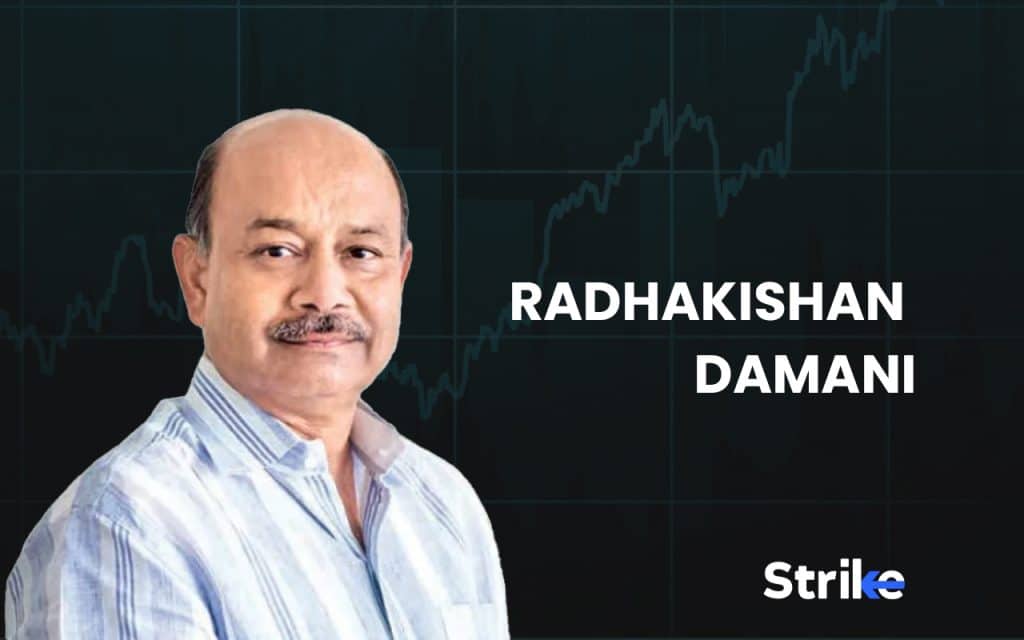
Radhakishan Damani was born on March 15, 1954. He left his education in college to pursue a career in the stock market. This was the time when he met and mentored legendary investor Mr. Rakesh Jhunjhunwala.
In 1992, Stocks were inflated. Damani knew this and started short-selling them heavily. As the markets tanked, Damani made a fortune by short-selling stocks in 1992.
He founded India’s most famous and one of the biggest supermarket chains Called DMart in 2002. DMart became a huge hit and started expanding its business throughout India. DMart went public in the year 2017 under the name of parent company Avenue Supermart and its IPO was a huge success.
As of today, Radhakishan Damani is worth $27.6 Billion and is the 78th richest person in the world.
- Azim Premji –
Azim Premji is a billionaire investor, businessman, and philanthropist. He was the former chairman of one of India’s largest IT firms called Wipro.
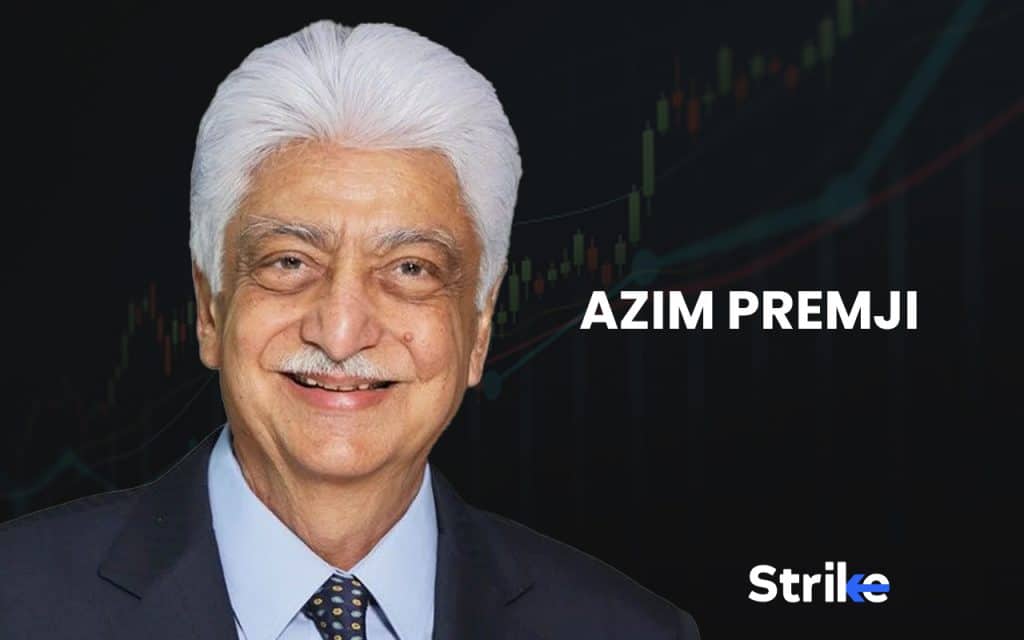
Azim Premji was born on 24th July 1945, in Mumbai. Premji is best known for taking over the family business which produced vanaspati at the time and turning that business into one of the biggest IT giants in India.
Currently, Azim Premji holds a portfolio worth Rs. 1,79, 494.8 crores. He also holds the majority stake in Wipro which is 72.9%.
According to Forbes, Premji has a real-time net worth of $9.2 billion and is currently the 18th richest person in India.
- Raamdeo Agrawal –
Raamdeo Agrawal is a businessman, value investor, the chairman and co-founder of one of the most renowned financial services companies in India called Motilal Oswal Financial Services Ltd.
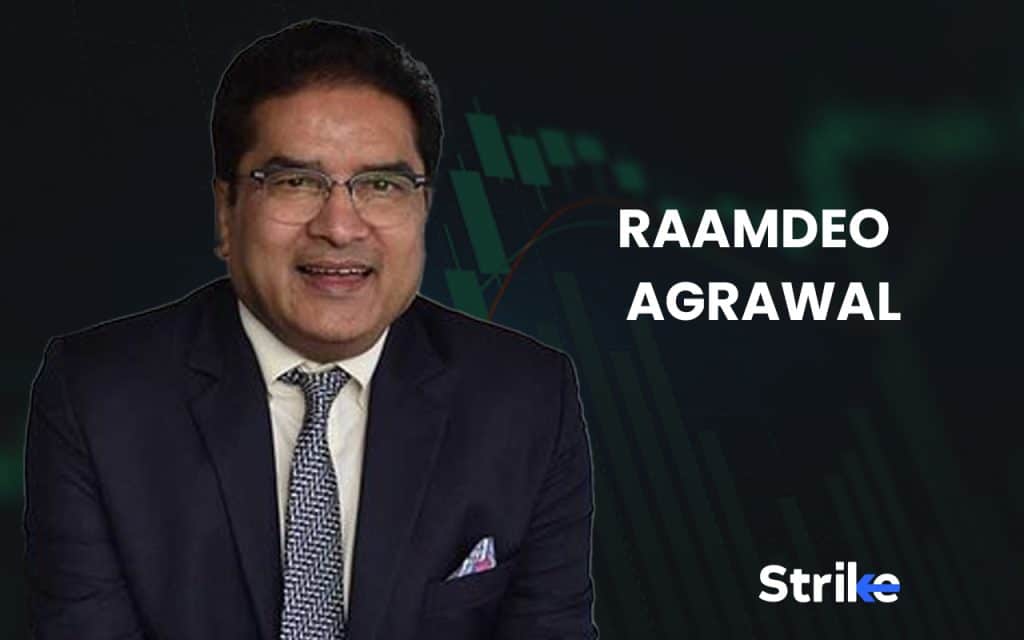
Agrawal studied B.Com at Mumbai University and later became a chartered accountant. While preparing for the CA examination, he met his future business partner, Motilal Oswal. Together they saw the stock market as a big opportunity and became a sub-broker under the name of Motilal Oswal. Gradually, Motilal Oswal expanded its business and offered a variety of services in the field of finance.
The investing philosophy of Agrawal is very simple. He believes in the 3 D’s when it comes to equity investment. That is –
- Discipline
- Diversification
- Differentiating value from the price
As of today, Motilal Oswal has an AUM of over two trillion Indian rupees. And according to Forbes, Mr. Raamdeo Agrawal has a real-time net worth of $1 billion.
- Vijay Kedia –
Vijay Kedia is a super successful stock market investor and the CEO of Kedia Securities Pvt. Ltd. Kedia is also known as the “Market Master”. He has been 100% invested in the markets for the last 30 years of his investing career.
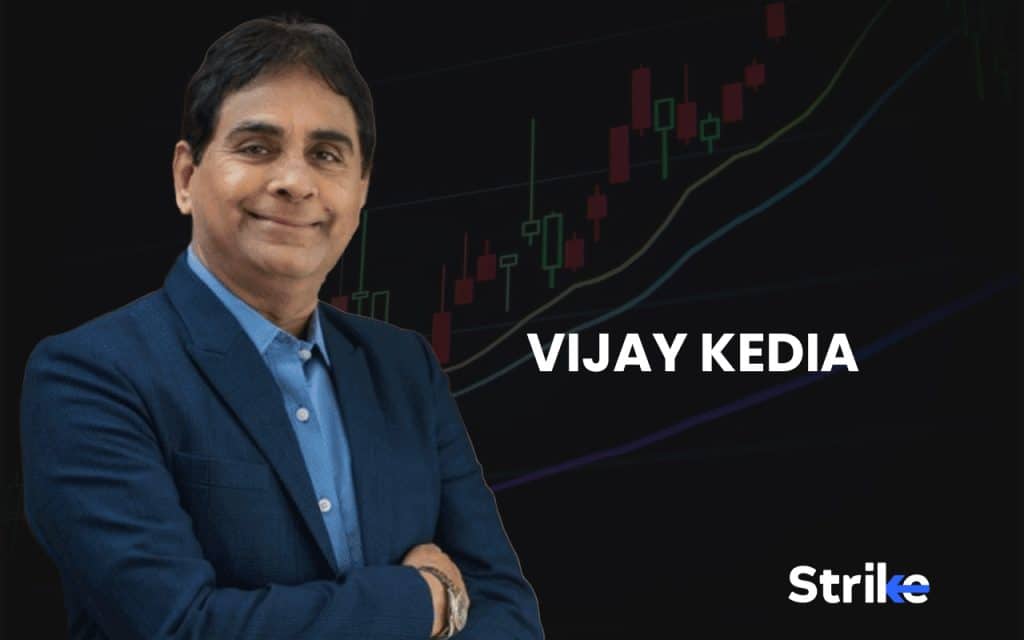
Vijay Kedia was born on 4th November 1959, in a middle-class family in Kolkata. He found his passion in the stock market at the age of 14. Kedia started to trade the markets when he was 19 and after experiencing a few failures, he decided to move to Mumbai.
In the early 2000s, he invested in 2-3 stocks which appreciated 100 times their value in the next 10-12 years. In 2012, Kedia was also able to predict the beginning of a bull run in Indian markets
His investment philosophy is called SMILE. Meaning he looks for companies that are Small in size, Medium in experience, Large in aspiration, and Extra-large in market potential. As of today, Vijay Kedia has a net worth of Rs. 862 crores.






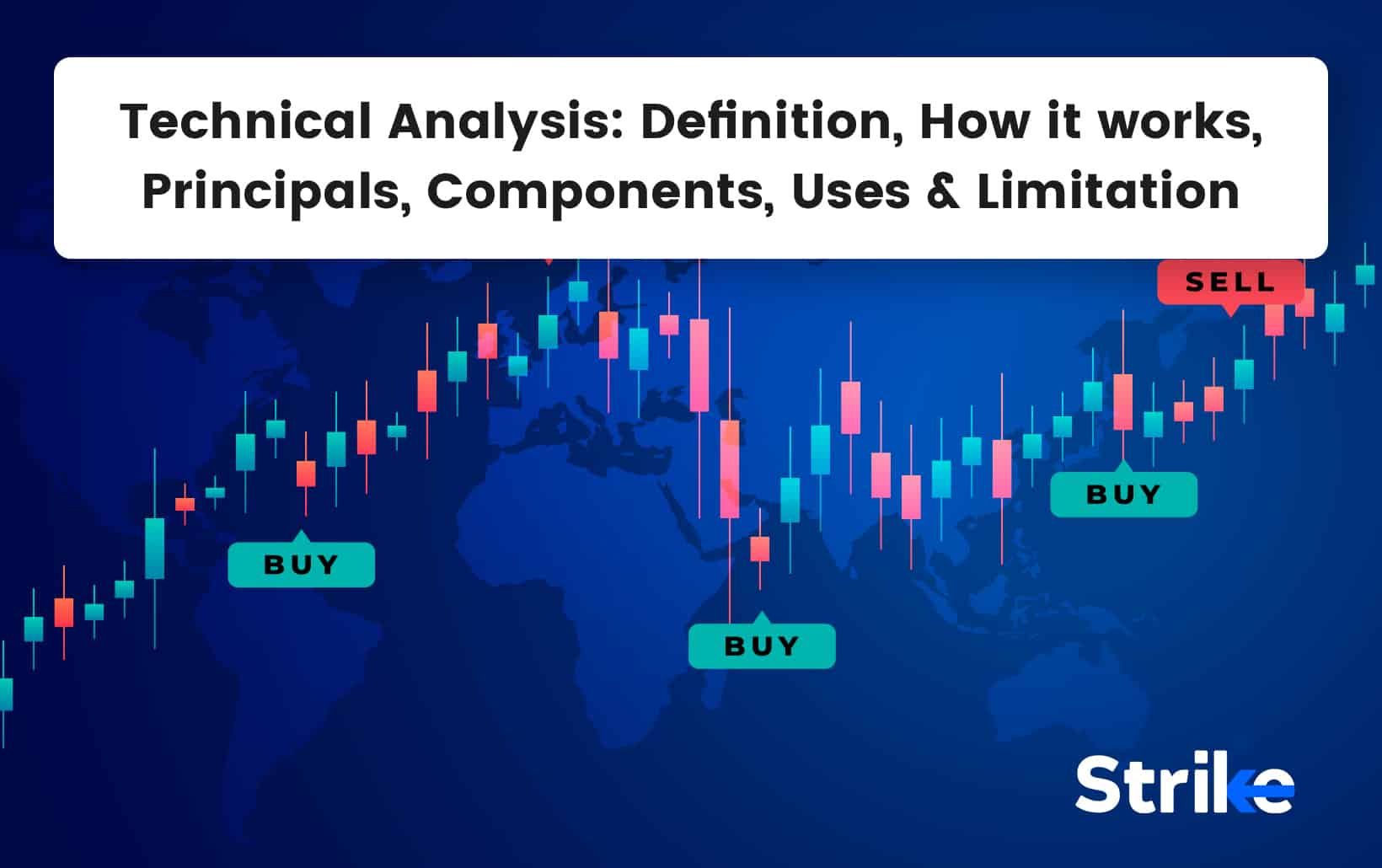

![85 Common Stock Market Terminologies for Dummies [Updated List for 2025] 44 85 Common Stock Market Terminologies for Dummies [Updated List for 2025]](https://www.strike.money/wp-content/uploads/2025/04/Popular-Stock-Market-Terms-for-Beginners-Banner.png)











No Comments Yet.